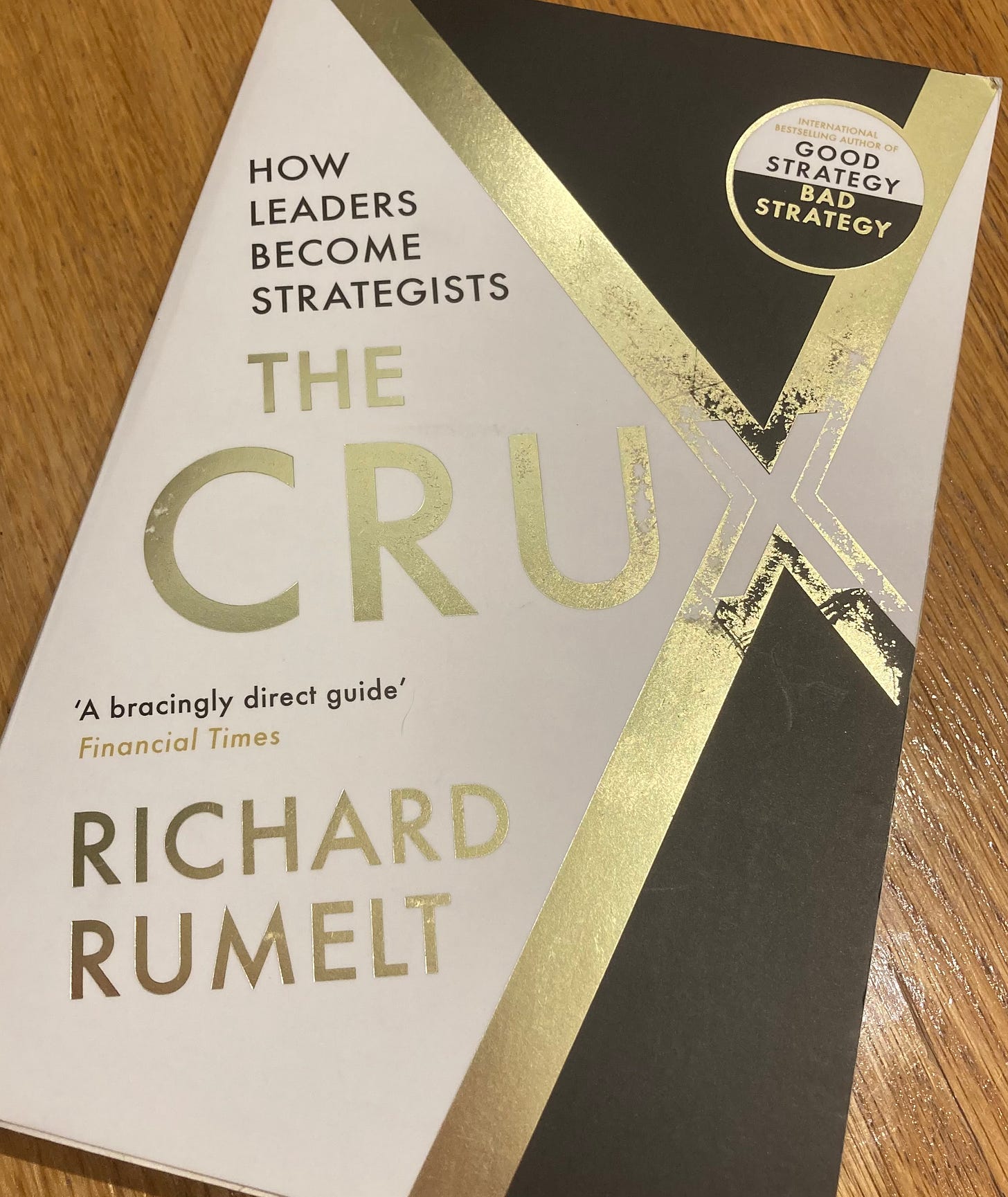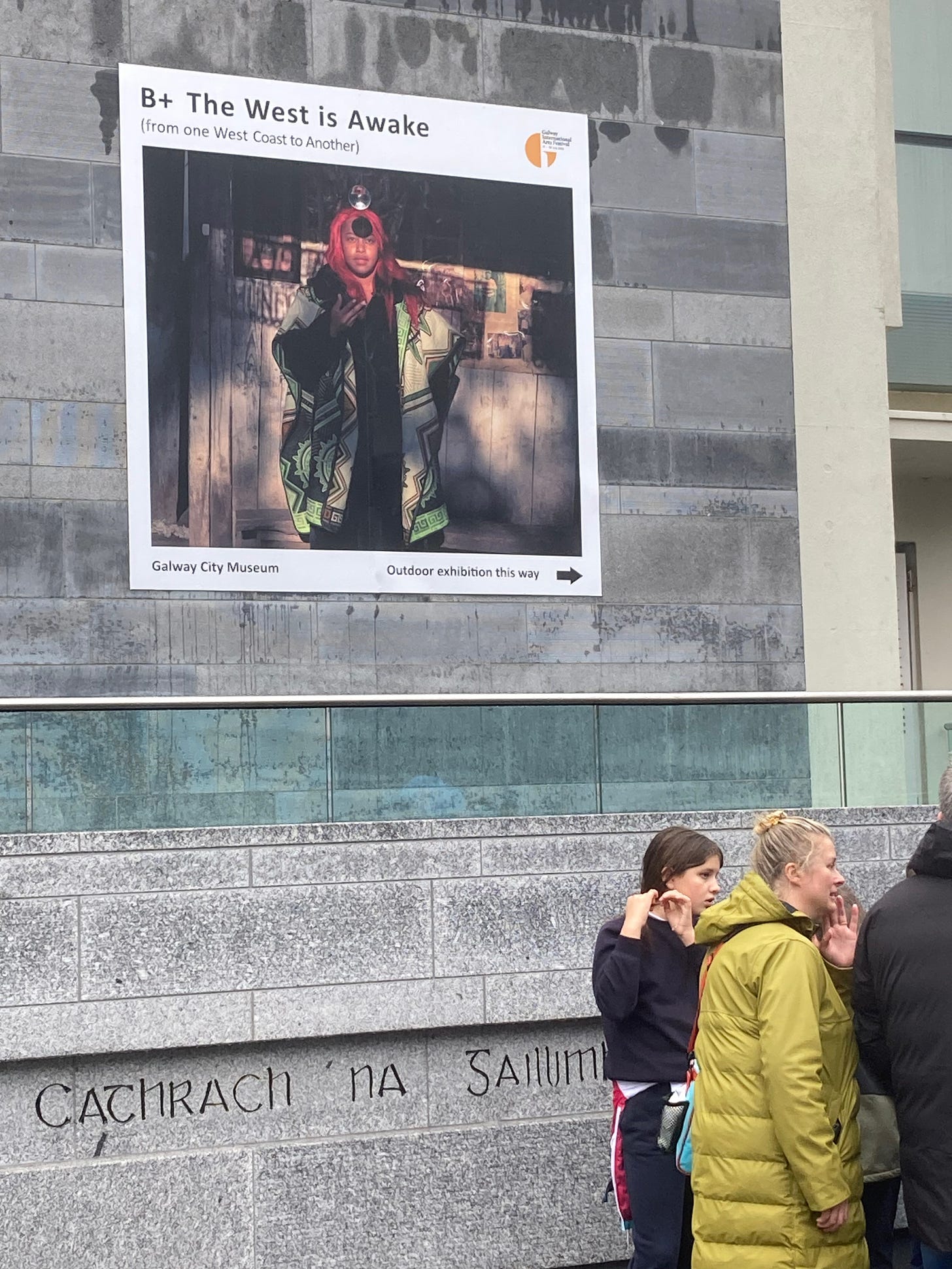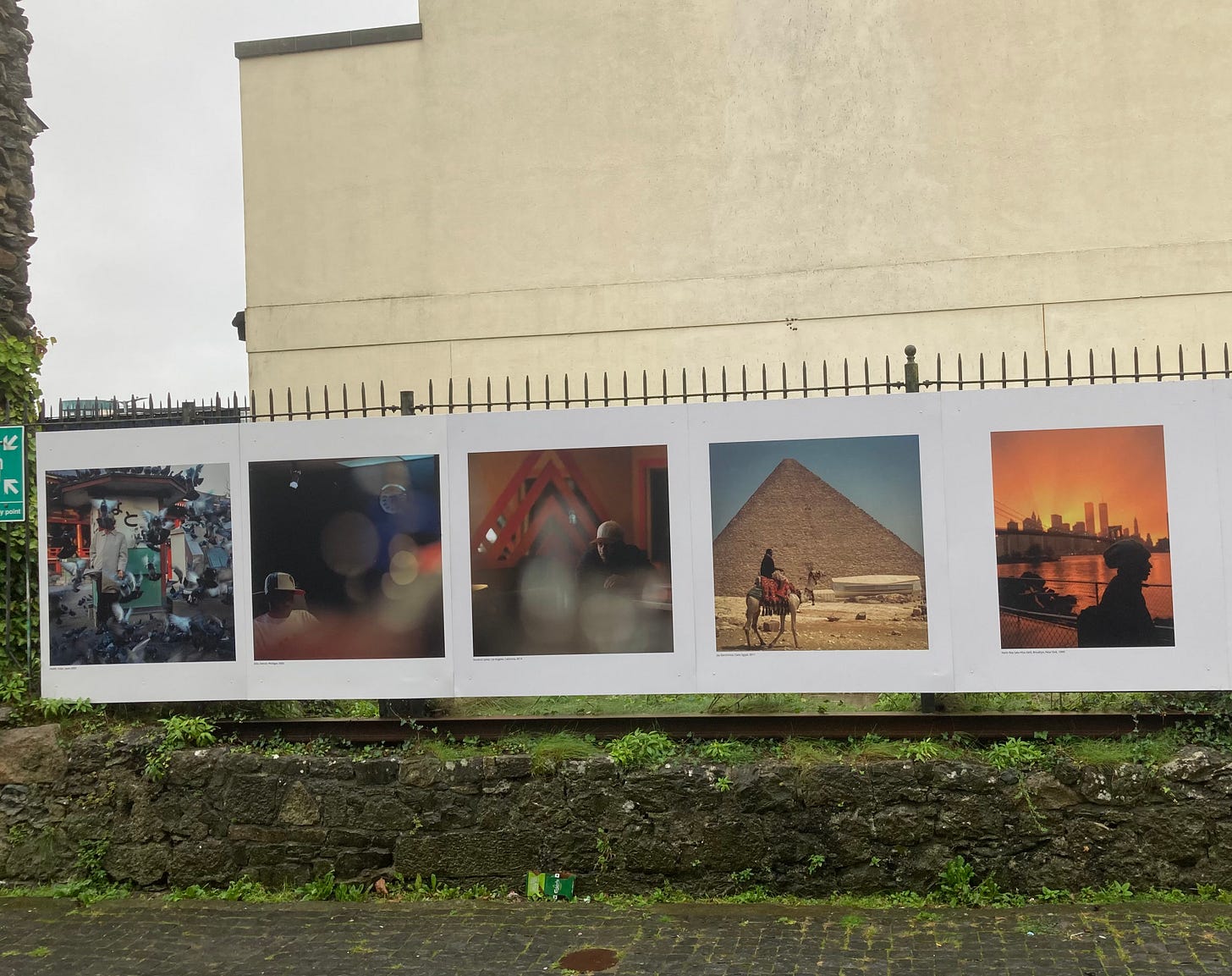21 October 2023. Strategy | Hip hop
How to address ‘gnarly’ strategic problems // Shooting the history of hip hop [#506]
Welcome to Just Two Things, which I try to publish three days a week. Some links may also appear on my blog from time to time. Links to the main articles are in cross-heads as well as the story. A reminder that if you don’t see Just Two Things in your inbox, it might have been routed to your spam filter. Comments are open. Have a good weekend!
1: How to address ‘gnarly’ strategic problems
The first part of a two-part review of Richard Rumelt’s strategy book, The Crux. The secon part will appear on Tuesday.
I picked up The Crux (2022) because Richard Rumelt’s previous book, Good Strategy Bad Strategy, is one of the best books out there on strategy. I wondered initially if his publisher had encouraged him to write it to build on the success of the earlier book.
Reading it, I’d say it is a ‘legacy’ book. Rumelt is towards the end of his career now, and I think, just from the text, that he wanted to complete the work he had started in Good Strategy, Bad Strategy. But it has taken me a while to review it, and I only realised as I wrote this why I had delayed.
(Image: Andrew Curry, CC BY-NC-SA 4.0)
'The crux’ is a metaphor taken from rock climbing: the the boulder that is the toughest part of a difficult climb, the part that needs to be solved if you are going to succeed. The crux, similarly, when applied to business is the nub of the problem, the part that needs to be understood and resolved if a strategy is to succeed. And it’s worth sharing his definition of strategy here”
a strategy is a mix of policy and action designed to surmount a crucial challenge” (p.110).
A review quote from the Financial Times on the front of my copy of The Crux calls the book a bracingly direct guide, but that wasn’t my experience of it. Part of the reason for this is the way he explains the crux: a deep insight that cuts through the heart of a knot of “gnarly problem”. For non-native English speakers, “gnarly” is “difficult to deal with because of being very complicated.”
He describes the characteristics of a gnarly situation reasonably early on (p.38), after we’ve done the rock climbing bit:
They are:
“There may be no no clear definition of the problem itself. Studying various concepts of ‘the problem’ and working to identify or choose the crux issue can be a large part of the work of identifying a strategy.”
Most of the time you do not have a single goal but a bundle of ambitions.” (Emphasis in original). These “may conflict with one another and... cannot normally be all satisfied at once.”
“Alternatives may not be given but must be searched for or imagined.”
“The connections between potential actions and actual outcomes are unclear... There are multiple interpretations of the facts and only weak connections between desired results and specific actions to be taken.”
In other words, we’re dealing with messy situations. This list, I think, conveys two of Rumelt’s general convictions about strategy making. The first is that it is difficult work; the second is that it is always contextual to a specific problem, a specific place, and a specific place. From time to time he takes a sideswipe at the business school “case study” method. Cases, in his view, don’t translate.
Of course, and perhaps I am being a bit snarky here, this also correlates handily with a bit of a mystique about strategy, which is useful if you are a management academic with a sideline in consulting.
Anyway, in this reading “the strategist recognises an embedded solvable problem—not the whole gnarly challenge but one with kinship to its key elements.” Also, importantly: “it is a problem we are capable of addressing.” There’s an acronym for this later on: ASC, or ‘addressable strategic challenge’.
The process he describes for all of this sounds similar to the kind of thing you might do to solve messy problems in general. First you collect, identifying the landscape of problems, issues and opportunities. Then you cluster, placing problems and opportunities into groups—typically, he says, around 20 of these. These have fuzzy boundaries, but the point is to explore the nature of the different challenges. Are they harder, or easier? Are they internal or external? Are they immediate or can they be deferred?
The final stage is filtering, which involves sequencing the challenges and addressing their importance and their addressability. This is where you start to get to “the crux”: something that is important but also hard to address.
Framing is also important here, distilling the issue—which is often a point of tension—into a few lines:
No one solves a problem they cannot comprehend and hold in their head (p.42).
The last three chapters (pp287-329) spell out this process in just about enough detail for you to try it at home — which is one of reasons I concluded it was a legacy book. But the examples don’t always seem to get to this rigorously difficult framing.
More on that in Part 2.
2: Shooting the history of hip hop
Hip hop turned 50 back in August, by common consent, and there’s been a lot of completely mainstream coverage of this anniversary: BBC, ABC, NPR, and so on. It’s a reminder of how far the music has come from the New York streets to become the dominant part of the music and entertainment industries.
(Photo: Andrew Curry, CC BY-NC-SA 4.0)
I was reminded of the anniversary by an outdoor exhibition, ‘The West Is Awake’ that I saw in Galway, in the west of Ireland, itself a reminder of how international the music is now, and there’s more on that below.
But rummaging around in the coverage, the best history had been put together by a Los Angeles music college, The Icon Collective. Best, because it placed the music within a wider context, starting with culture:
Four foundational elements characterize hip hop culture. The original four main pillars of hip hop include DJing/turntablism, MCing/rapping, B-boying/breaking, and visual/graffiti art... The intersection of these four elements also generated a cultural revolution that rapidly spread across the globe. The global influence of hip hop culture has shaped music styles, fashion, technology, art, entertainment, language, dance, education, politics, media, and more.
Icon locates the beginnings of hip hop in the economic collapse of New York in the early seventies, when New York City came close to bankruptcy, manufacturing industry retrenched, and there was a ‘white flight’ from the city to the suburbs, along with rising gang violence:
Consequently, businesses closed their doors, causing many economic opportunities and sources of entertainment to evaporate. As a result, urban youth turned to the streets for recreation and self-expression. The abandoned buildings and parking lots set the stage for block parties... DJs and MCs brought the music by setting up mobile “Sound Systems” introduced by Jamaican culture. Sheets of cardboard became dance floors for break-dancers, and brick walls transformed into canvases for graffiti.
DJ Kool Herc, who held the ‘Back to School Jam’ in August 1973 with his sister Cindy, introduced the ‘breakbeat’—playing the same record on two turntables, and switching between them to extend the break—thereby extending the time for the breakdancers to show what they could do:
Kool Herc named the people dancing to his music B-Boys and B-Girls, which was short for Break-Boys and Break-Girls. Overtime, breaking evolved and became a global subculture that transcended into the mainstream.
The initial wave of hip hop borrowed the turntables and big speakers from Jamaican dub culture. But the arrival of synthesizers and drum machines transformed hip hop in the same way that it transformed other genres. In particular, the Roland TR-808 drum machine allowed producers to program their own drum patterns. And sampling technology also allowed the break to be transformed.
Icon describes the 1980s and early 1990s as “the golden age of hip hop”, and it was a golden age built on sampling. For a moment, music production technology had outstripped copyright legislation:
No copyright laws protected music from being sampled, so artists could use samples from a variety of sources without legal troubles. They were capturing samples from various genres ranging from jazz to rock music. However, sampling was not limited to music. R.Z.A. of the Wu-Tang Clan sampled sound clips from his collection of 1970s Kung Fu films.
As hip hop became more mainstream, it also became a cultural influence, bringing new fashions and even new words into the language:
Various clothes, shoes, accessories, and hairstyles became a form of expression. Street slang, later known as Ebonics, also crossed over into the mainstream. For example, the words “bling” and “fo’ shizzle” have been added to the Oxford English Dictionary.
The exhibition in Galway celebrated the work of the hip hop photographer B+ (born Brian Cross), who had grown up in Limerick and moved to Los Angeles to study photography at the California Institute of the Arts in 1990.
It had been curated for this outdoor space by Denise Chaila, and a board that introduced the exhibition characterises the photographs:
Lauryn Hill, three days from giving birth being photographed in the attic of her childhood home while her mother massages her arms. Yasin Bey pictured in silhouette during the silence at sundown with the sun setting on the American empire after a day spent waiting for him on the stoop of his apartment. Dreams and relationships and music, done the way Mochilla always does it; make photos of what you see, bring only what you can carry in your backpack.
(Photo by B+: Image by Andrew Curry, CC BY-NC-SA 4.0)
There were also four lines from a Fugees’ song that caught the mood:
"Yeah in saloons we drink Boone's and battle goons till high noon
Bust rap toons on flat spoons, take no shorts like poon poon's
See hoochies pop coochies, for Gucci's and Lucci
Find me in my Mitsubishi, eatin' sushi, bumpin' Fugees."
Much of hip hop royalty is here, gathered along the walls, along with other artists I hadn’t come across before. Here’s De La Soul, for example:
(Photo by B+: Image by Andrew Curry, CC BY-NC-SA 4.0)
One section, which also gives an idea of the round the clock accessibility of the street exhibition, includes the radically inventive hip hop producer Dilla, in the shadows second left, Kendrick Lamar next to him, Yasin Bey (Mos Def), end right, and Jay Electronica, on the camel.
(Photo: Andrew Curry, CC NC-BY-SA 4.0)
The photos in the exhibition can also be seen online.
j2t#506
If you are enjoying Just Two Things, please do send it on to a friend or colleague.







